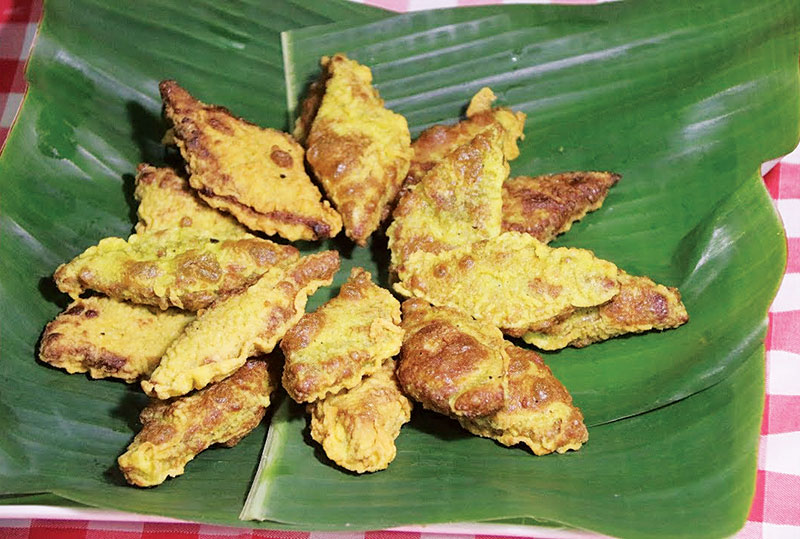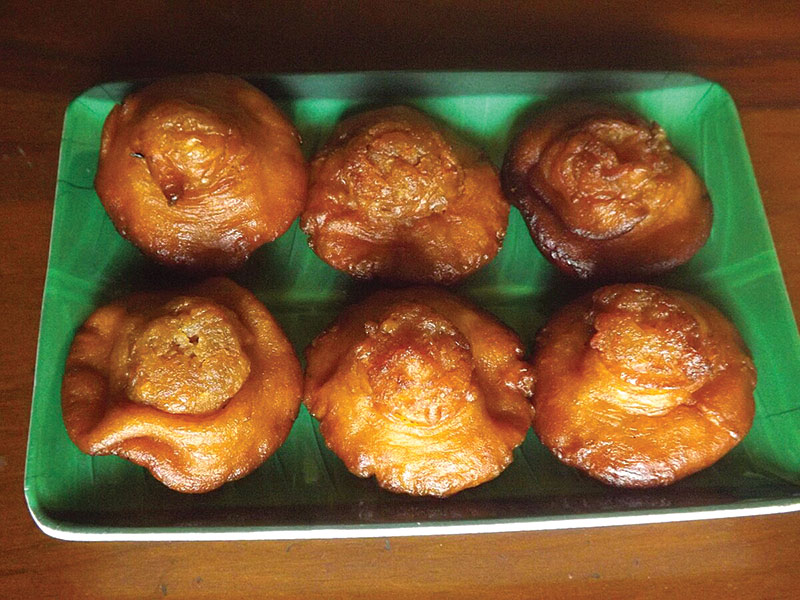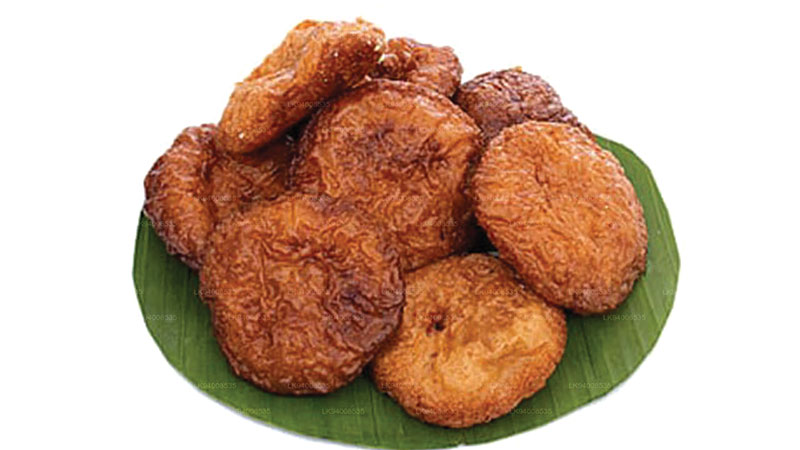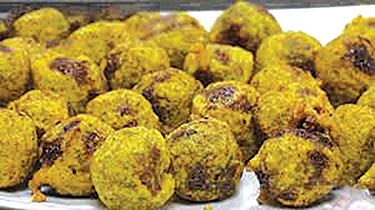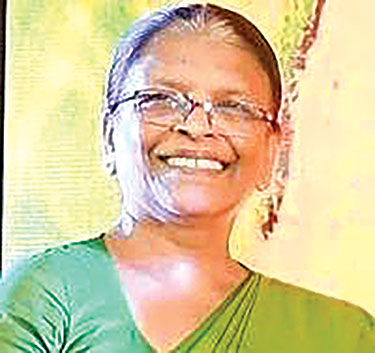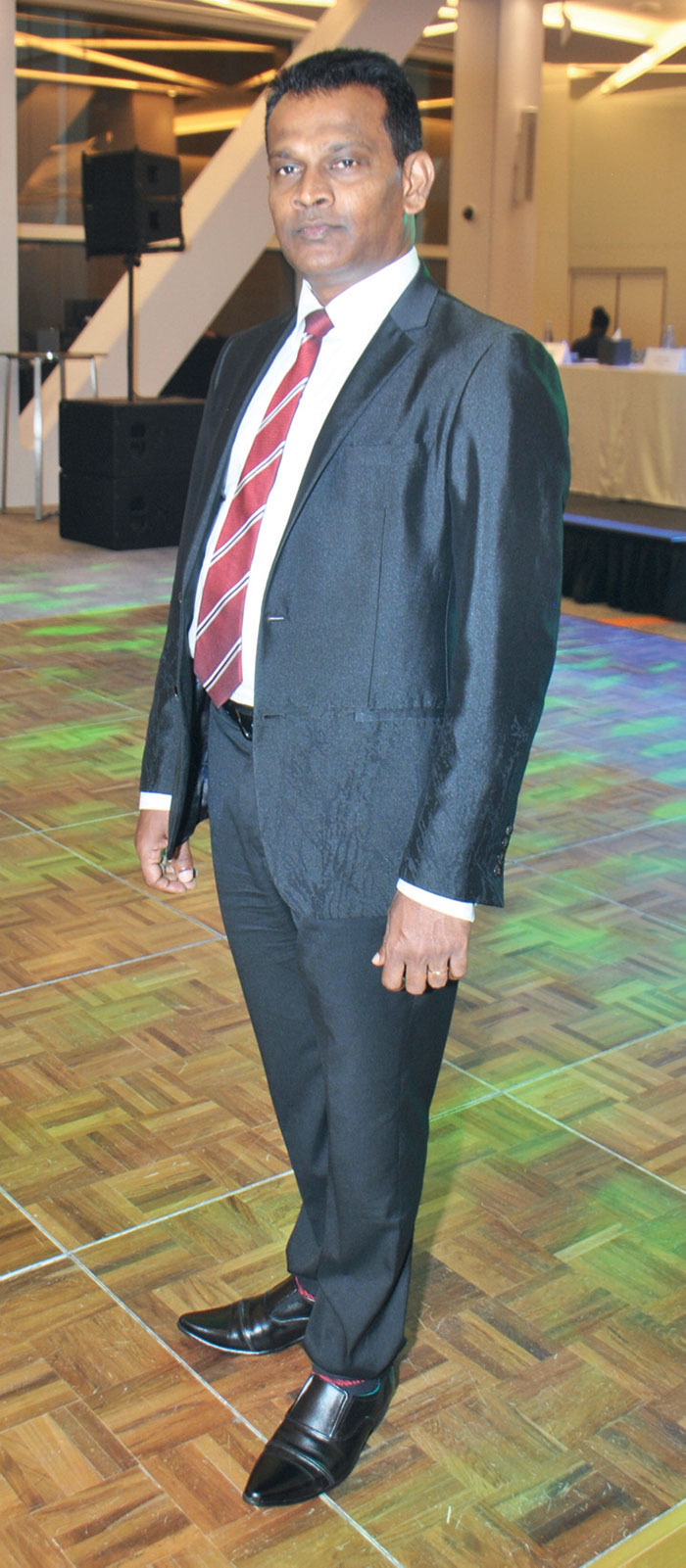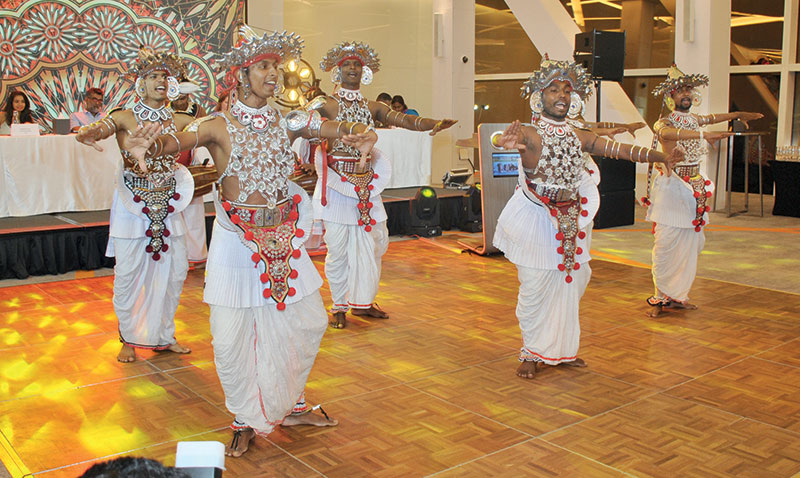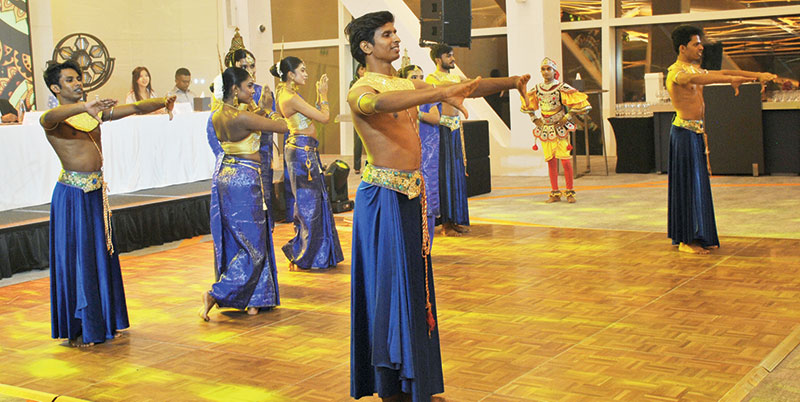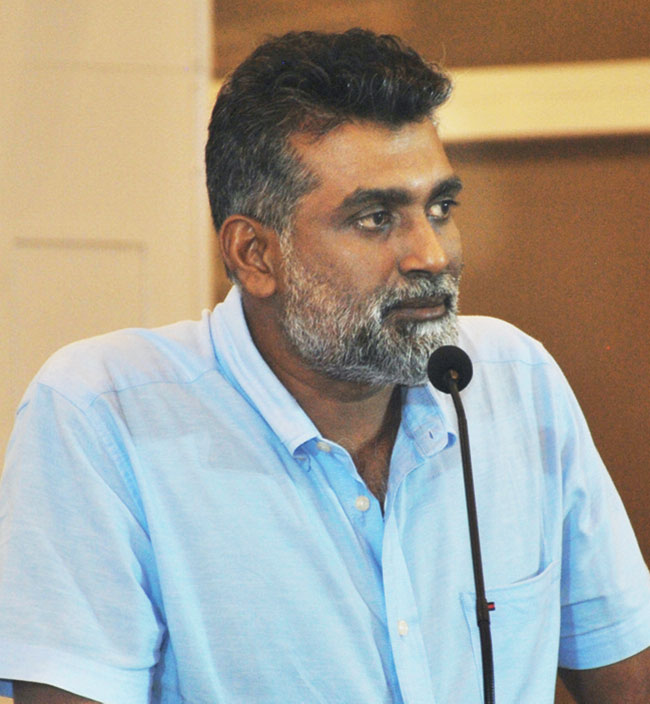Life style
Musical ‘choon paan’bread trucks
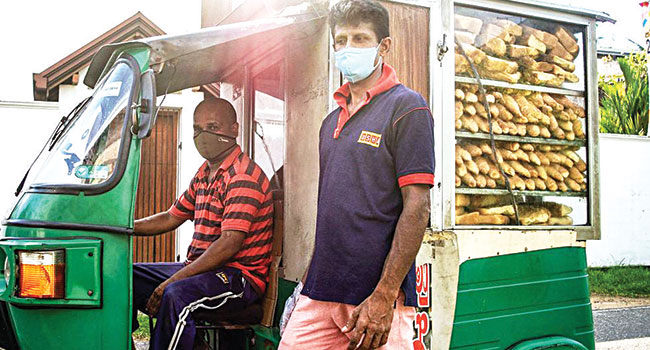
by Zinnara Ratnayake
For years, the sound of Beethoven meant bread in Sri Lanka. Now, years after the island’s mobile bread vendors disappeared, they’re being revived to help during the pandemic.
I was young when I first heard the music. It came from the earthen road outside where a man was selling bread from a tuk tuk. Unlike other colourful three-wheeled vehicles, the back of this one held a glass display cabinet piled high with neatly stacked baked goods. “It’s the choon paan man,” my father told me.
“Choon paan” loosely translates to “music bread” in Sinhala. During my childhood, the fresh-off-the-oven kimbula (“crocodile”) bun we bought from the choon paan man for evening tea gave me bliss. This beautifully fluffy, buttery, home-baked bun was sprinkled with sugar and twisted into a slender, crocodile-like shape. Half of it was for me, the other for my father.
Twice a day starting at 06:30, choon paan trucks would drive along the dusty path near the paddy fields of my family’s rural village in Kurunegala, 120km north-east of Colombo, selling loaves of bread. Early in the morning, the men circled the roads with fish buns and sausage rolls made at small bakeries. They reappeared in the afternoon around 16:00, bringing sweet buns for tea. Some were buttery, round-shaped buns dotted with raisins. Others were stuffed with jam or sprinkled with sugar.
For us growing up on the tropical island, Beethoven meant bread
For years, these small trucks all played the same, tinny recorded music. When I heard the faint hum of the breadman from a distance, I would run to the dusty path and call my father. Years later, during music classes in school, I realised that this familiar tune that we Sri Lankans just called “choon paan music” was actually Beethoven’s 1810 classic Für Elise.
So, how did this classical composition written in Austria come to symbolise fresh-baked confections in Sri Lanka?
When tuk tuks became increasingly popular in Sri Lanka in the early 2000s, many bakers used the three-wheeled vehicles to take their bun business on the road and sell to distant neighbourhoods and villages. This was also around the time when mobile phones became popular. Just as an ice cream truck’s jingle alerts residents that it’s approaching, these mobile bakers started playing their mobile phone’s ringtone through a horn speaker to let residents know the choon paan truck was near.
Of course, one of the most popular ringtones from the early 2000s was Beethoven’s iconic masterpiece, Für Elise. So, whenever people in Sri Lanka would hear it, we’d head out to wait for the “music bread” truck to arrive. Ever since, for us growing up on the tropical island, Beethoven meant bread.
After relocating to the city of Kandy for high school, I still heard Für Elise every day. Even when I was already late for class, with my school tie loosely hanging around my neck and my hair braided into two with white ribbons, I ran after the choon paan truck to catch it for morning fish buns. Stuffed with canned fish, spiced potato and chopped vegetables, they were a treat with a cup of piping-hot ginger tea.
Six years ago, I moved again, to Sri Lanka’s capital, Colombo. In the six years I’ve been here, I’ve seldom seen a choon paan truck nor heard the familiar tune I grew up with.
Sri Lanka’s famous music bread trucks have made a comeback, thanks to an unlikely reason: the coronavirus pandemic
According to Colombo-based baker Padmini Marasinghe, that’s because it has recently become much more fashionable – and even a status symbol – to be able to buy baked goods at a traditional bakery than to buy bread from a truck. As a result, Sri Lanka’s once-ubiquitous music bread trucks have now largely disappeared.
As Marasinghe explained, many urbanites were convinced that breads from chain bakeries were of better quality than those from mobile trucks. “But choon paan products are from home bakers. They are better than mass-produced food in large bakeries,” Marasinghe said.
She also added that people complained choon paan goods were too expensive given their small, mobile operation. “They reduced prices and curtailed the quality to make marginal profits. There was less filling in a fish bun or little butter in a kimbula bun, so they lost their clientele,” Marasinghe said.
Then in 2017, the former government banned loud music from mobile bakeries, which further led to their demise. Some trucks circled the roads without music but failed to make a profit. Without Beethoven notifying the neighbourhood that bread was coming, it seemed that residents wouldn’t rush to the street.
In recent years, cities and tourist towns have also seen a rise in home delivery services. “People would rather order fish buns from an upmarket bakery on Uber Eats” Marasinghe said. “This put choon paan out of business.”
Marasinghe admits that the idea of starting a choon paan truck had always seemed tempting to her, but by the time she started her small bakery in 2019, nearly all the bread trucks were gone.
Yet, in recent months, Sri Lanka’s famous music bread trucks have made a comeback, thanks to an unlikely reason: the coronavirus pandemic.
As the virus began sweeping across Asia, Sri Lanka imposed an island-wide curfew to slow its spread. The government ordered restaurants, bakeries and all “non-essential” businesses to close. Marasinghe had to shutter her business, too. Yet, the government did permit the door-to-door sales of baked goods.
Many of these mobile bakeries are now back on Sri Lanka’s streets, with residents listening for the familiar ringtone sounds of Für Elise
“With no way to salary my bakery staff, I decided to start a choon paan truck as home delivery of bakery products [was] termed an ‘essential service’,” she said.
Unable to find a tuk tuk, Marasinghe’s husband borrowed a friend’s mini lorry and turned it into a makeshift choon paan truck to operate in Hanwella, about 30km from Colombo. “We played Für Elise so it would send the message: the choon paan man is back!” Marasinghe said.
She is not alone. Many of these mobile bakeries are now back on Sri Lanka’s streets, with residents listening for the familiar ringtone sounds of Für Elise and rushing to their gates for loaves of bread. In fact, almost overnight, bakers dusted off their old choon paan trucks and created a delivery network of tuk tuk bread to ensure that housebound islanders could get their buns.
“They’ve found a new appreciation,” said Colombo-based journalist Amalini De Sayrah. “Perhaps we didn’t realise how valuable it was, but now stuck at home with no way to go out, people are realising the value of choon paan.”
Arul Kogilan, a physician volunteering as part of a Covid-19 prevention task force, appreciates the return of choon paan drivers as essential-service providers. “With bakery goods being delivered to their gates, people can stay home avoiding the risk,” he said. “But we need to acknowledge that they are putting themselves out there at risk for us.”
While the curfew was relaxed late last month, islanders are advised to stay home except for obligatory work.
Now that I’m sheltering in place back home where I grew up, at around 07:00 am every morning, I wake up to the sound of choon paan. The truck travels past our house as the rattling Fur Elise eventually fades into a vague hiss. When I get up, my father has already bought bread. In the late afternoon, when I hear Fur Elise from a distance, I cry out for my father.
It’s as though I’m young again, waiting for the classical ringtone and the simple joy of a sugar-sprinkled choon paan kimbula bun.
One half for me, the other for my father.
Life style
Kevum – Befitting a King
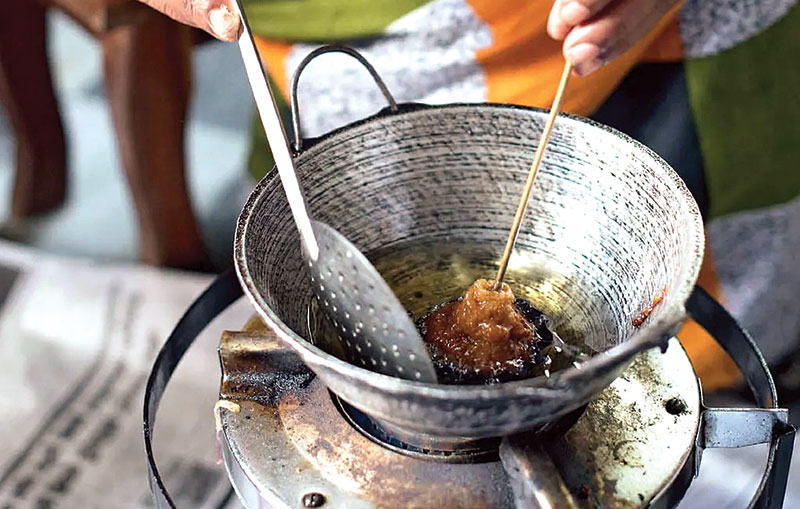
The avurudu table of any Lankan home is complete only when it is laden with kevum. Dating back to ancient times, many types of kevum are chronicled even in our classical texts. The Dutch rulers of the island are said to have relished them, some even asking if they grew on trees… A delicacy which was offered to visiting dignitaries, kevum was revered by our kings even in the battle field not only as an energy-booster but also as a wound disinfectant.
BY RANDIMA ATTYGALLE
The culmination of Avurudu preparations in my childhood with my grandparents was marked by the ritual of Kevum-making. Athamma would ‘book in advance’ the kevum specialist Soida Hami (Soida aachchi to us children), and install a special hearth in her back verendah for the grand moment. I would watch Soida aachchi in wonderment as her thick batter of rice flour and best of kithul treacle shaping into kevums in a hot wok of coconut oil. The long kevum koora in her nimble fingers would achieve the feat of the perfect konde. It was almost a rite of reverence, so much so I was not supposed to talk to her until the first batch of Konda-kevums was completed. Like many old-folk of her vintage, Soida aachchi believed that talking while the first few kevums are done would result in a flawed product.
She would then place each perfect Konda kevuma on a banana leaf for the excess oil to drain. Once the whole exercise was completed, she would place Konda-kevum in large earthen pots and store them in the dum messa or the storage area above the main hearth of the kitchen. She would spare me only one kevuma and the rest had to wait until the auspicious time on avurudu day!
Travellers’ records
Robert Knox an English sailor who was held in captive in the court of the Kandyan King Rajasinghe II and one of the prolific chroniclers of ancient Ceylon in his famous work, An Historical relation of the Island Ceylon documents on the sweet meats of Lankans with a special account of kevum.
‘They have several sorts of sweet-meats. One they call Caown. It is like to a fritter made of Rice-flower and Jaggory. They make them up in little lumps and lay them upon a leaf, and then press them with their thumbs and put them into a frying-pan and fry them in Coker-nut Oyl or Butter. When the Dutch came first to Columba, the King ordered these Caown to be made and sent to them as a royal treat. And they say, the Dutch did so admire them, that they asked if they grew not upon trees, supposing it past the Art of man to make such dainties.’ (Spelling as in the original Knox)
The account of Knox enables rich insights into this wonder of a sweet meat which enthralled many a traveller to the island including dignitaries. The European trader Cosmas who visited Ceylon in 545-550 AD, documents that along with gems, Kevum and Kalu dodol from Ceylon were taken to the Roman court of Emperor Claudius during the sixth century.
- Mun kevum
- Konda kevum
- Athirasa
Classical literature
Kevum dates back to ancient times and our classical texts such as the Ummagga jatakaya, Pujawaliya and Saddharma Ratanawaliya bear evidence to this fact. “Originally known as poopa this sweet meat came to be known as kevum in the Dambadeniya-Kurunegala era. Jathaka atuwa getapadaya mentions 18 kinds of sweet-meats found in the ancient Sri Lanka and among them are several types of kevum such as sendi kevum, mal kevum, athirasa, pena kevum, raa-kevum,” says Prof. Kusumalatha Lankamulla from the Department of Sinhala and Mass Communication at the University of Sri Jayewardenepura.
This scholar with research interest in Culture, Traditional and Modern Literature goes onto note that Mahawamsa in its 32nd chapter refers to two types of kevum in the context of alms offered by King Dutugemunu. The two types- thel kevum and maha de kuvum mentioned, were fried in ghee. “Many of our classical texts mention kevum in multiple festive contexts beyond avurudu. In Ummagga jathakaya, kevum is mentioned as a fitting gift to be taken when visiting parents. Saddharma Ratanawaliya refers to boxes of kevum or kevum pesa.“
An energy booster
Among the popular kevum types found today are Konda kevum, athirasa, mun-kevum, naran kevum and hendi-kevum. Although the ingredients used for each type may slightly differ, rice flour and treacle (now largely replaced with sugar) remain common to all. The much sought after Konda kevum which is relatively a later addition to the range of kevum found here at home is believed to have originated during the Kandyan period says Prof. Lankamulla. “During the Kandyan period, men were prohibited from cutting their hair off and they had to tie it in form of a knot on top of their heads. Konda kevuma is believed to have been inspired by this practice.”
Traditionally, Sinhalese soldiers were given a bag of kevum when going to war. History has it that King Dutugemunu went a step ahead and used kevum to treat wounded soldiers. His army used to prepare kevum months in advance and keep them exposed to air so that the mould can grow on them.
This mould in today’s language had ‘antibiotic properties’ and was used on the wounds of the soldiers to prevent them from festering. “In a bid to undermine the pride of place given to kevum as a super food by the locals, the British coined the famous derogatory adage: ‘Sinhalaya is a fool but is an ace at eating kevum’. (Sinhalaya modaya-kevum kanna yodaya)
Steeped in tradition
Superstitious beliefs surrounding the process of kevum-making are not uncommon and these vary from region to region in the island, says Prof. Lankamulla. Regardless of the region, several common traditions were followed by our ancestors and these still continue to be observed in several parts of the country, she says. “The frying pan with coconut oil to prepare the kevum was kept on fire at an auspicious time and village matriarchs who were highly skilled were mobilized for the occasion. Women also believed that they must refrain from talking when the first kevum is being made. For centuries, the first kevum was considered to be the ‘konduru kevum’, dedicated to the sledge-fly or the konduruwa. The village women would hang the first kevum up for the insects so that the rest would be unspoilt.”
With the passage of time, many Lankans, particularly city-dwellers depend on commercially available avurudu kevili including kevum. Although kevum is synonymous with avurudu, today people get to enjoy it round the year thanks to many sweet meat kiosks found in cities. Although these outlets have best sales during avurudu, they get plenty of orders from Lankans travelling abroad or coming home for vacation at other times of the year as well.
One such die-hard kevum fan is Uthpala Ranatunga from Ottawa, Canada. “My Loku amma (oldest aunt) makes it a point to pack me a parcel of best quality Konda kevum to take with me whenever I’m in Sri Lanka for a vacation.
I deep-freeze them for longer use and eat them sparingly,” says Uthpala to whom kevum is always a strong reminder of home. “Each time I indulge in them I feel nostalgic and miss home.”
Kevum is an integral part of the Lankan culture, finding its way from ancient classical literature to that of the contemporary including children’s literature and arts. The much-loved sweet meat is celebrated in the work of Sybil Wettasinghe – the iconic story teller and illustrator.
Come avurudu, we often hear the intonation of Lionel Ranwala, the eminent musician, vocalist and an authority on Sri Lankan folk music, whose tribute to the enduring legacy of this delicacy is one of the best in our times:
Me avurudu kale -sinaha weyan rale
Thel ihirunu kewum gediya wage…
Life style
Festive glamour at Nethara

Nethara Collection ,is a world of export quality garments in Diulpitiya, Boralesgamuwa, is infused with an ultra festive spirit this season catering to the women of today. Unbelievable offers and discounts from Nethara for Sinhala anTamil new year. On selection of women’s clothing, ranges from casual options to formal occasion wear,all at friendly prices,to enhance your wardrobe this festive season.
Nethara collection, started small in 2017, but soon it outgrew, today with an ever increasing customer base, branded and non branded clothing this shopping centre has become very popular. Export quality , stylish dresses, crop tops, fancy blouses, trousers and many more to flaunt yourself and enhance your wardrobe.Their extensive collection, maintain low pricing allowing everybody to have a chance to shop till they drop dead. From casual wear to formal wear,they have women to men’s items like tee shirts, shirts for every occasion.
Nethara clothing has long remained a name that has struck a chord with Sri Lankan shoppers. “We believe our success has been based up on the premise that absolute sincerity towards customers and no matter what the economic situation that prevails, we try our level best to keep our prices low and within everybody’s budget, said managing director, Nethara Collection Sampath Kumara.
This April season Nethara collection brings an all new collection of export quality seasonal wear. Celebrate the season with exclusive offers made just for you! Dresses, blouses, casual, formal wear denim, men’s shirts and many more… world of limitless style and joy!
This festive season Nethara unwraps a celebration of warmth, style and sophistication. Immense yourself in a vibrant festive atmosphere as you explore thier collection under one roof 345 Boralasgamuwa With a focus on quality, affordability and customer satisfaction, Nethara export quality boutique invites you to celebrate the Sinhala and Tamil New Year in style.
(Zanita)
Life style
Sri Lanka tourism unveils strategic vision
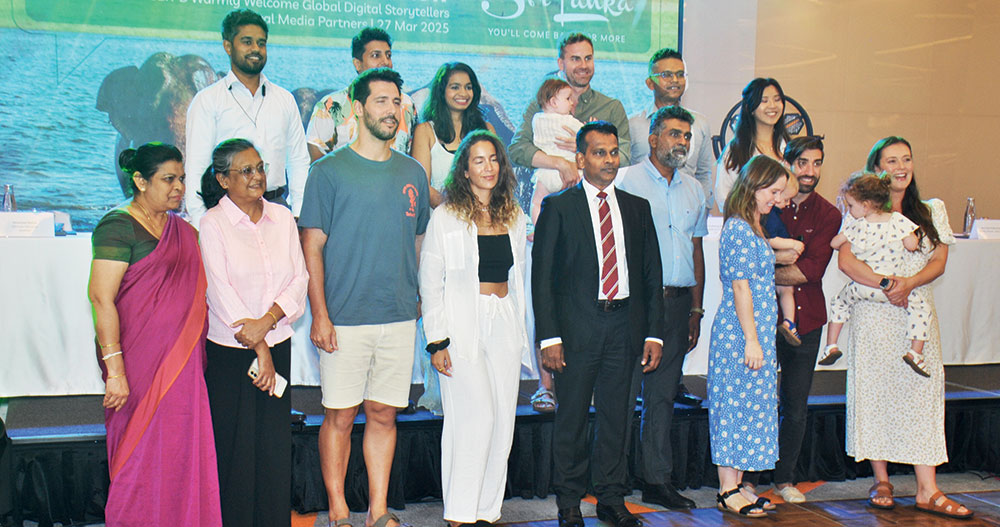
Sri Lanka Tourism Bureau hosted a landmark event at cinnamon Life for an ambitious campaign to spotlight Sri Lanka as a top travel destination. This initiative hosted international influencers and local media to capture the unique charm of Sri Lanka’s destinations. These travel influencers will share thier real time content across platforms like Instragrams Tik Tok and youtube amplifying Sr Lanka as a must visit destination. Many media personal, bloggers and influencers participated in this event which will take them on a tourism travel featuring some of Sri Lanka’s top destination.
Sri Lanka Tourism Promotion Bureau (SLTPB) hosted a landmark event at the Cinnamon Life Hotel, Colombo. The event was led by . Deputy Minister of Tourism, Prof. Ruwan Ranasinghe, with the participation of SLTPB Chairman Buddika Hewawasam, officials, travel influencers and their families, as well as journalists specializing in tourism sector reporting. The gathering set the stage for transformative initiatives aimed at bolstering Sri Lanka’s tourism sector and redefining its global image.
In his opening remarks, Buddika Hewawasam underscored the challenges facing the tourism sector, particularly the seasonal dip in arrivals during the summer months. “The next few years will be the most challenging period for all of us,” Hewawasam stated, emphasizing the need for international collaboration and strategic development. He further highlighted the critical role played by international travel influencers and media professionals in raising awareness of Sri Lanka’s hospitality and inspiring tourists worldwide to visit.
- Dileep Mudadeniya
- Deputy Minister of TourismProfess or Dr Ruwan Ranasinghe
- Guests
The Deputy Minister of Tourism, Prof. Ruwan Ranasinghe, detailed the innovative nature of the campaign and its importance in showcasing Sri Lanka’s rich heritage, natural beauty, and diverse travel experiences to mainstream and emerging tourism markets.
During the event, several prominent travel influencers shared their thoughts about Sri Lanka’s uniqueness as a destination. They highlighted that Sri Lanka is a country where travellers don’t need to worry about finding incredible experiences—nature has already done the hard work. The influencers remarked on Sri Lanka’s unparalleled diversity, noting that it is possible to experience a range of climates within just a few hours by travelling to different parts of the island. From sun-soaked beaches to misty highlands, and from lush forests to cultural treasures, Sri Lanka offers a world of adventures in a compact and accessible setting.
In comparison to destinations like Bali, which some influencers noted as overcrowded, Sri Lanka stands out with stable and balanced tourism activities. The event attendees were thrilled by the country’s warm hospitality, authentic DDirector cuisine with an impressive variety, long history, and rich culture. These qualities make Sri Lanka not only inviting but genuinely unforgettable for visitors.
The travel influencers in attendance expressed strong confidence in their ability to share this powerful message with the world. They were determined to shape international travel trends by showcasing Sri Lanka’s unique appeal, while also helping to attract new types of guests. The influencers represented a diverse range of travel segments, including family travellers, solo female travellers, honeymooners, and adventure seekers. Their efforts were supported by Sri Lanka Tourism officials and journalists representing both local and international media agencies.
The ‘Sri Lanka, A Story for Every Season’ campaign represents SLTPB’s first large-scale effort to boost summer travel through digital storytelling and influencer collaboration.
Featuring a curated destination familiarization tour, the campaign will spotlight wildlife safaris, cultural heritage, spiritual pilgrimage sites, scenic landscapes, and adventure tourism. Influencers will produce high-impact content for platforms like Instagram, YouTube, and Facebook, reaching over 2.2 million travel enthusiasts globally.
Sri Lanka Tourism shared impressive winter peak season results, with international arrivals reaching 665,295 by March 23, 2025—a marked increase compared to the previous year. These figures illustrate the sector’s potential for growth, and the campaign aims to sustain momentum throughout the summer months.
The event was a call to action for stakeholders to unite in elevating Sri Lanka’s global tourism appeal. With plans to generate over LKR 32 million worth of media coverage and connect with diverse travel segments, the campaign underscores Sri Lanka’s commitment to redefining itself as a leading destination for year-round travel.
By Zanita Careem
Pix by Darmasena Welipitiya
-

 Business1 day ago
Business1 day agoDaraz Sri Lanka ushers in the New Year with 4.4 Avurudu Wasi Pro Max – Sri Lanka’s biggest online Avurudu sale
-

 News6 days ago
News6 days agoBid to include genocide allegation against Sri Lanka in Canada’s school curriculum thwarted
-

 Business2 days ago
Business2 days agoStrengthening SDG integration into provincial planning and development process
-

 Business1 day ago
Business1 day agoNew SL Sovereign Bonds win foreign investor confidence
-

 Sports3 days ago
Sports3 days agoTo play or not to play is Richmond’s decision
-

 Latest News5 days ago
Latest News5 days agoIPL 2025: Rookies Ashwani and Rickelton lead Mumbai Indians to first win
-
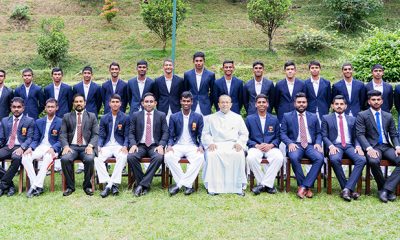
 Sports4 days ago
Sports4 days agoTrinity, St. Anthony’s out to end decade long victory drought
-

 News6 days ago
News6 days agoSL needs a comprehensive solution, not selective justice: NPC


